What to do about waste? (Garbage in India)
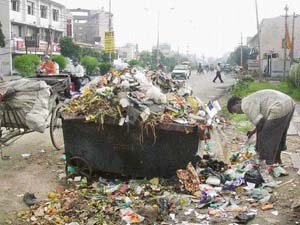 Garbage is a smelly and unsightly issue in many metropolises around the world; but the degree of open waste in Indian cities is particularly difficult to ignore. I’ll begin with an anecdote, provided by an expat living in Hyderabad:
Garbage is a smelly and unsightly issue in many metropolises around the world; but the degree of open waste in Indian cities is particularly difficult to ignore. I’ll begin with an anecdote, provided by an expat living in Hyderabad:
“I finally did it. We were stopped at the traffic signal at the Park main gate… the driver of the car next to us threw an empty candy wrapper out of his window onto the street. I told my driver that someday, I was going to get out of the car and pick up the litter and throw it back at the guy. My driver laughed, and then said ‘He just threw something else out, sir.’ It was an empty cigarette pack. I said ‘That’s it!’ I unbuckled my seatbelt and jumped out, picked up the guy’s trash and threw it back into his car. I yelled at him: ‘Dude! This is why your city looks like a pig-sty! Because you are a pig! Have some pride, man!’ and got back in the car. You should have seen the look on his face and on all of the people on two-wheelers around us!”
While I must admit there are many times when I feel the urge to do the same, the issue is not so straightforward. In response to this story emerged some other expat reactions:
“I am in municipal waste management by profession, and in fact it’s the reason why I am in India. I go to lots of conferences on the subject as a speaker, coming from a country which is leading on the subject, and originally I was thinking that everything is so easy and logical, but it’s not! You had a good intention [in giving the litterer a lecture], but it’s like a vegetarian shouting at someone eating a steak, telling him he does the wrong thing. Why would he care? I definitely agree that littering is bad but it’s not the fundamental cause why Indian cities look as they do. People litter in the US and even in Switzerland and the worse a place looks, the more one litters.”
And another expat: “One of the reasons Indians throw the rubbish on the floor is that it’s someone else’s job to pick it up! We can help while we are here [as expats] but we can’t assume that our values are correct. We are guests in this country. And yes I hate the rubbish here. I believe that this is an education matter. It has to be taught at an early age!”
I remember when I was in Jaipur a few years ago, I was disturbed how households simply threw their waste on the train tracks* next to their homes. From there some rag-pickers may pick out the recyclable or other valuable materials, and cows munched on scraps, but otherwise it just stayed there – an impromptu garbage dump. There is no system of households separating materials (e.g. plastics from metals) for recycling. Everything is thrown together and away. Beyond powerful smells (particularly in the +40oC summer heat), and the inconvenience of stepping over trash on the streets (particularly unpleasant during heavy monsoon rains), there are of course health issues related to having so much open garbage.
In Canada we have garbage trucks and sometimes surprisingly well-paid garbage collectors** as it is deemed a physically difficult job that many prefer not to do. But in India, labour systems are different – you have such a high population, that “muscles come cheap”. And so, as an Indian friend in Jaipur once pointed out, it makes more sense in India to have manual garbage collection, as it is arguably cheaper (and employs more individuals) than purchasing and maintaining automated trucks. There are, of course, garbage trucks in India and they are seen on occasion doing some rounds (but only picking up trash from larger collection bins, not individual households). The problem is that a lot of garbage gets missed; OR there is an insufficient number of formal collectors to keep up with levels of trash disposal.
Much of garbage sorting in India falls to rag-pickers – a difficult and unpleasant task which nonetheless constitutes the livelihood of numerous poor Indians. According a 2007 Economist article, in Delhi alone there are more than 300,000 rag-pickers, saving the Municipal Corporation of Delhi an estimated Rs. 600,000 (= C$9,850) a day in waste-disposal costs. There are even some beautiful photos and a documentary about rag-pickers in Mumbai. In the large Dharavi slum in Mumbai – made famous by the film Slumdog Millionaire – there is an entire economy around the recycling industry (which I was fortunate enough to be able to see first-hand last year), as rag-pickers and scrap dealers in the slum recycle almost 80% of Mumbai’s waste. The irony is that while their operations are technically illegal, they provide a huge service to society. If municipal authorities gave the rag-pickers a legal status as municipal employees, with some security, benefits and protective-gear, their lives could be considerably better.
But aside from the infrastructure for garbage collection – how does the trash get on the ground in the first place? Still today I don’t have the heart to litter in India, even when there is so much trash already on the ground. I was raised under the tireless slogan at school: “don’t be a litter bug!” And so I find myself here wandering around carrying my trash until I finally find a bin (which can take some time). Even in nice middle- and upper-class Indian homes, individuals will toss small papers and plastics toward the garbage bin in the corner of the room, but not bother if they miss. After all, in a few hours the maid will come and sweep it up…
————————————————————————————————————
*On the topic of trains, as anyone who has taken a train in India will well know, the toilet consists of a hole in the floor – meaning waste goes directly on the track; individuals are discouraged from using toilets while the trained has stopped in a station.
**Garbage collectors earned over $25/hour in Toronto in 2009, according to one article; although elsewhere I’ve seen closer to $12/hour. For unionized garbage collectors, they can take home triple their regular rate on holidays – which on Remembrance Day in 2011 was $81-an-hour (or $810 for the day).
Disclaimer: The photos of Dharavi slum are all courtesy of the NGO Reality Gives which runs tours of the slum (the tour guides are residents of the slum itself, and all proceeds go back into running local programs). During the tours, taking of photos is not permitted out of respect for the residents – so the NGO shared some of their photos.

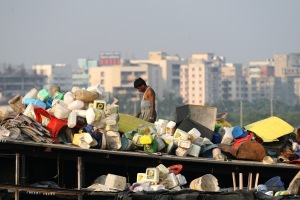
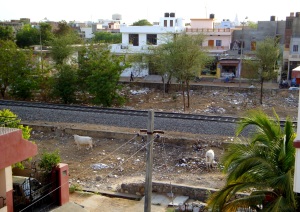
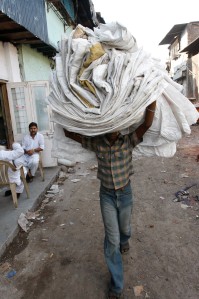
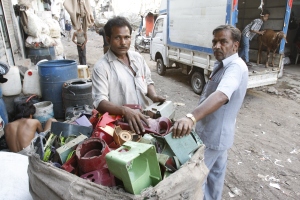
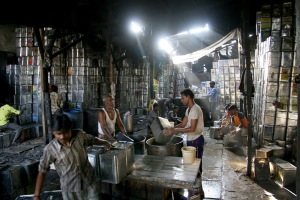
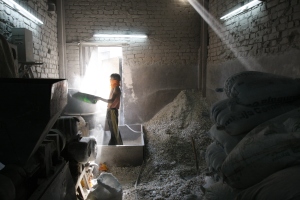
Recent Comments